Architecture
The most famous Barcelona building is surely Sagrada Familia by Spanish architect Gaudi. Gaudí's work is admired by architects around the World as being one of the most unique and distinctive architectural styles. His work has greatly influenced the face of Barcelona Architecture and you will see Gaudí's work all over the city.
Barcelona won the 1999 RIBA Royal Gold Medal for its architecture,the first (and as of 2012, only) time that the winner has been a city, and not an individual architect.
Gaudí’s Sagrada Família
The city’s premier icon, Gaudí’s gargantuan unfinished Temple Expiatori de la Sagrada Família (Expiatory Temple of the Holy Family) is entering its 125th year of construction. The peculiar pointed spires, with organic shapes that resemble a honeycombed confection, give the whole place a sort of fairy-tale quality that would suit a Harry Potter film.
The style of la Sagrada Familia is variously likened to Spanish Late Gothic, Catalan Modernism and to Art Nouveau or Catalan Noucentisme.
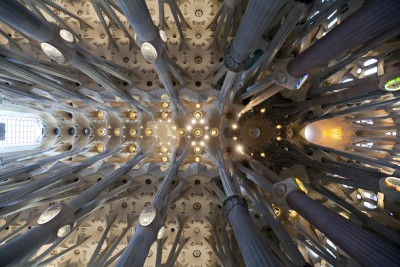

MUSEU PICASSO
Pablo Picasso’s connection to Barcelona, where he spent key formative years and first showed his work in 1900, eventually bore fruit when his manager Jaume Sabartés donated his collection to the city in 1962. Nearly as stunning as the 3,500 Picasso works on display are the five Renaissance palaces that have been renovated and redesigned as an elegant and naturally lighted exhibit space.
The Boqueria Market
The oldest mid-city, open-air market of its kind in Europe, the Boqueria market, a jumble of color and aromas just off the Rambla, is the heart, as well as the stomach, of the city. As Barcelona’s culinary fortunes soar, the Boqueria is increasingly assuming its pivotal role as the prime supplier of the fish, foul, meats, wild mushrooms, fruits, and vegetables.
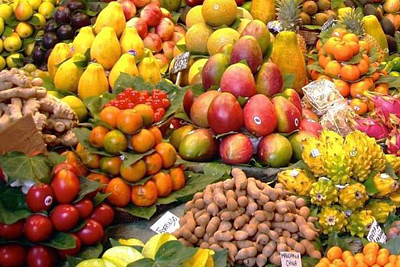
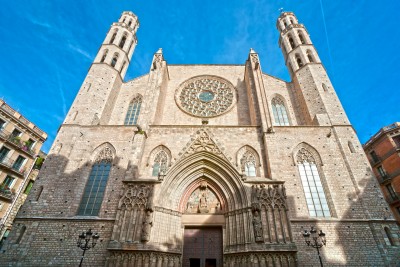
Santa Maria del Mar Basilica
For peace, symmetry, and Mediterranean Gothic at its classical best, Santa Maria del Mar is the Sagrada Família’s polar opposite. Burned back to its original bare-bones structure by a fire at the start of the Spanish Civil War in 1936, it was restored by post-Bauhaus architects who saw the purity of stonemason Berenguer de Montagut’s original 1329 design and maintained the elegant and economical lines of the seafarers’ waterfront basilica.
Palau de la Música Catalana
Often described as the flagship of Barcelona’s Modernisme, this dizzyingly ornate tour de force designed by Lluís Domènech i Montaner is a catalog of Art Nouveau crafts and recourses, including ceramics, sculpture, stained glass, paintings, and a plethora of decorative techniques. Much criticized during the aesthetically somber 1939–75 Franco regime, the city’s longtime prime concert venue is an exciting place to hear music.
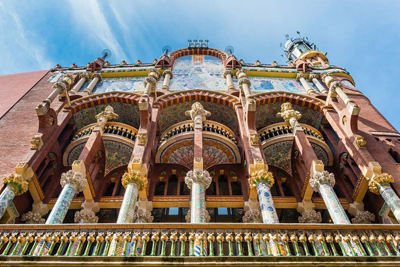

Casa Batlló and the Manzana de la Discòrdia
The Manzana de la Discòrdia (Apple of Discord) on Passeig de Gràcia is so called for its row of eye-knocking buildings by the three most famous Moderniste architects-Domènech i Montaner, Puig i Cadafalch, and Gaudí. Of the three, Gaudí’s Casa Batlló, with its undulating dragon-backed roof, multicolor facade, skull-and-bones balconies, and underwater interior, is the most remarkable and the only one open to the public.
Park Güell
Gaudí’s light and playful park in the uppermost reaches of the village of Gràcia was originally developed as a garden community for Count Eusebi Güell and his closest friends. The flower-choked hillside contains a series of Moderniste gems ranging from the undulating ceramic bench around the central square to the gingerbread gatehouses.

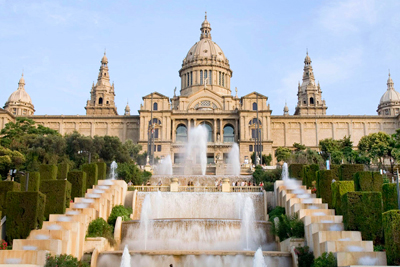
Museu Nacional d’Art de Catalunya (MNAC)
Barcelona’s answer to Madrid’s Prado hulks grandly atop the stairway leading up from Plaça Espanya. MNAC houses nearly all of Catalonia’s art, from Romanesque altarpieces to Art Nouveau masters like Casas.